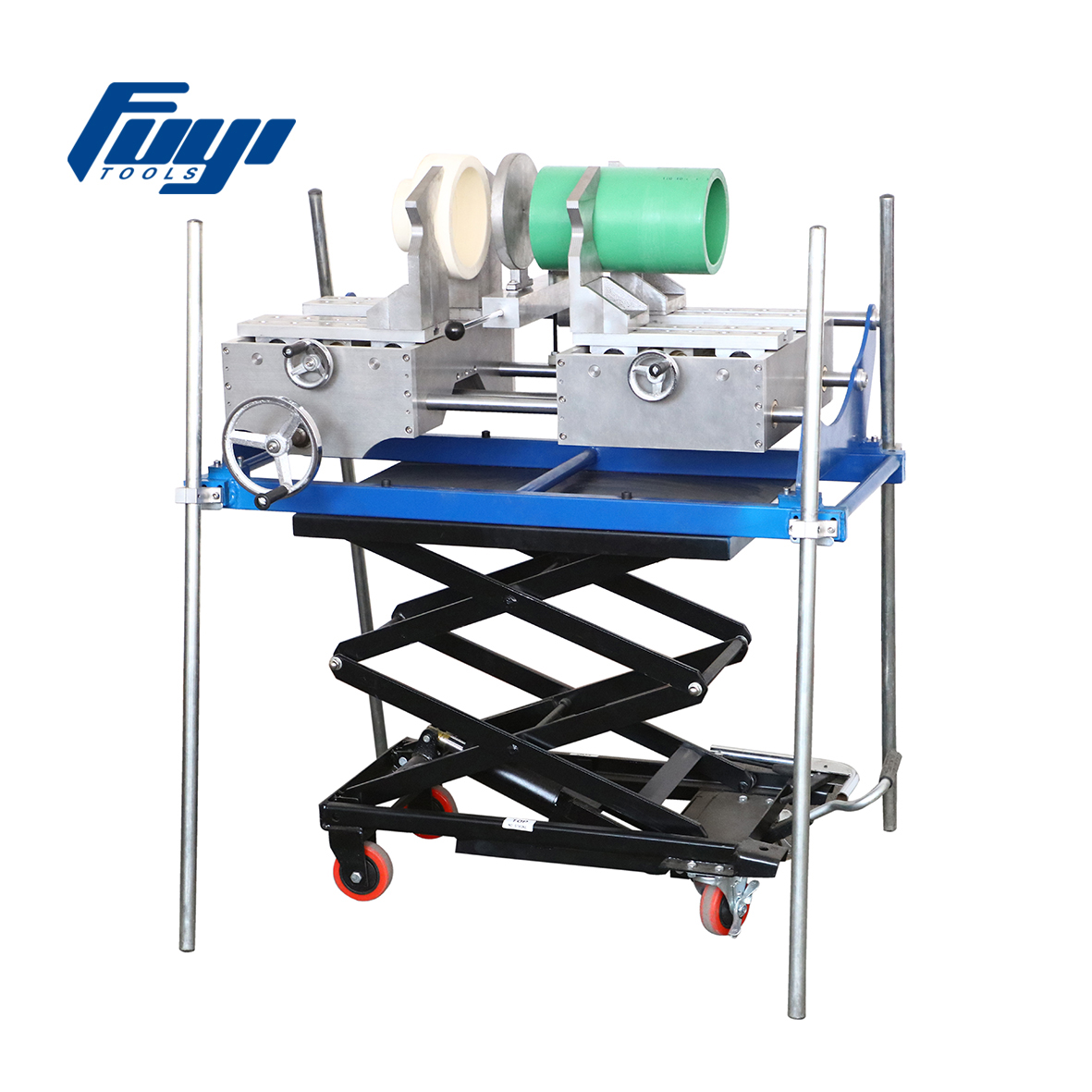The balance between welding precision and safety: Bench Socket Fusion technology innovation
Introduction
With the widespread application of plastic pipe systems in the fields of construction, water supply and drainage, HVAC, industrial pipes, etc., welding quality has become a key factor affecting the performance and life of the entire system. As an important equipment for connecting thermoplastic pipes such as PPR, PE, and PB, Bench Socket Fusion Welding Machine not only undertakes the task of welding efficiency, but is also directly related to the safety of the construction process and the reliability of the welded joints.
At a time when technology is rapidly iterating, how to improve welding accuracy while ensuring the safety of operation has become a core issue of common concern to manufacturers and users.
1. What is Bench Socket Fusion Welding Machine?
The Bench Socket Fusion welding machine is a benchtop mechanical device used for welding thermoplastic plastic pipes and fittings. Its main principle is to use electric heating to heat the heating die to the set temperature, then insert the pipe and fitting into the die for heating, and then quickly insert them to complete the welding.
Key features include:
Benchtop structure: suitable for use on a workbench or centralized work area, suitable for large-scale welding tasks;
Constant temperature heating system: ensures stable temperature every time;
Multi-station selection: suitable for fast replacement of different pipe diameters;
High-pressure spring or pneumatic control: provides stable pressure and centering effect.
Compared with handheld welding machines, bench-type equipment can provide higher consistency and control accuracy, especially in industrial pipelines or projects with strict construction standards, the application advantages are obvious.
2. Why is welding accuracy so important?
Welding accuracy is the core indicator for measuring welding quality, which is mainly reflected in the following aspects:
Precise temperature control
Excessive welding temperature may cause carbonization of the material, while too low temperature may lead to weak welding. Bench Socket Fusion equipment is equipped with precise temperature control units and sensors, which can usually control the temperature difference within ±2°C.
Stable time control
Preheating time and cooling time are another key parameter affecting the welding effect. Advanced models support automatic timing and buzzer reminders to reduce human errors.
Concentricity and docking force are consistent
Manual welding often causes eccentricity due to different manual pressure. Bench machines use fixtures or guide systems to ensure that the joints are completely aligned and flat to avoid "cold welding" or stress concentration.
Improved welding accuracy is directly related to the system:
Reduced leakage risk
Long-term service life is improved
The pass rate of pressure testing is improved

3. Safety: Dual protection of operation and system
The welding process not only involves high-temperature equipment, but also may have risks such as operating errors, electric shock or material damage. Bench Socket Fusion technology improves safety through many means:
Automatic protection system
Over-temperature protection: When the temperature exceeds the set value, the system automatically powers off;
Anti-dry burning design: Heating is prohibited when the die head is not detected;
Automatic power off: Automatic sleep after long-term non-operation to prevent the equipment from overheating.
Ergonomic design
Anti-scalding design: The heating die shell is equipped with a high-temperature resistant protective cover;
Anti-slip handle: Reduce operating fatigue and slipping risks;
Visual display interface: Intuitively understand the temperature and working status to avoid blind operation.
Operator safety
Through simple and intuitive panel control and clear operating instructions, the technical threshold is lowered and the probability of novice misoperation is reduced.
4. Technical innovation of Bench Socket Fusion
In recent years, Bench Socket Fusion equipment has been continuously upgraded, and the following innovations are particularly significant:
Intelligent temperature control system
The new generation of welding machines uses a digital PID intelligent temperature control chip to adjust the heating power in real time to ensure that the die temperature is constant and adapt to the welding requirements of different materials (PPR, PE, PB).
Microcomputer integrated control
The integrated main control board integrates temperature, time, counting, fault detection and other functions to reduce external control components and improve equipment stability.
Multi-station fast switching design
Equipped with multi-specification dies (such as 20mm-63mm) that can be quickly disassembled and assembled, without repeated heating and cooling, greatly improving work efficiency.
Energy saving and environmental protection
The die head area is wrapped with high-efficiency insulation materials to reduce heat loss; low-energy consumption components reduce power waste, which meets the standards of green construction sites and environmentally friendly factories.
Data recording and tracking
High-end models support welding data storage and export, providing reliable data support for project quality inspection and construction records.
5. Industry trends and future prospects
Bench Socket Fusion technology is rapidly developing in the direction of intelligence, automation, and visualization. Future trends include:
Fully automatic welding system
Integrated automatic clamping, heating, plugging, and cooling modules to achieve one-button start and automatic execution of the entire process, especially suitable for industrial assembly lines or large projects.
Integration with BIM/cloud platform
Welding parameters, time, temperature and other data can be uploaded to the cloud platform, connected with project management software or BIM system, and quality visualization management can be achieved.
Enhanced material compatibility
The equipment is suitable for a variety of new plastic materials (such as PEX, PERT), and is even expected to support the welding of composite pipes in the future.
Lighter and modular design
In the future, equipment will tend to be modular and lightweight, suitable for mobile construction sites, and improve adaptability and maintainability.
News categories
Exhibition Information
Related Products
 +86-158 6813 9123
+86-158 6813 9123 +86-571- 82432777
+86-571- 82432777 [email protected]
[email protected] No.7 Yangguang Road, Linpu Industrial Area, Hangzhou City, Zhejiang Province, China
No.7 Yangguang Road, Linpu Industrial Area, Hangzhou City, Zhejiang Province, China
Copyright © 2024 Hangzhou Fuyi Tools Co., Ltd. All Rights Reserved.
|
 Eng
Eng  русский
русский Español
Español












